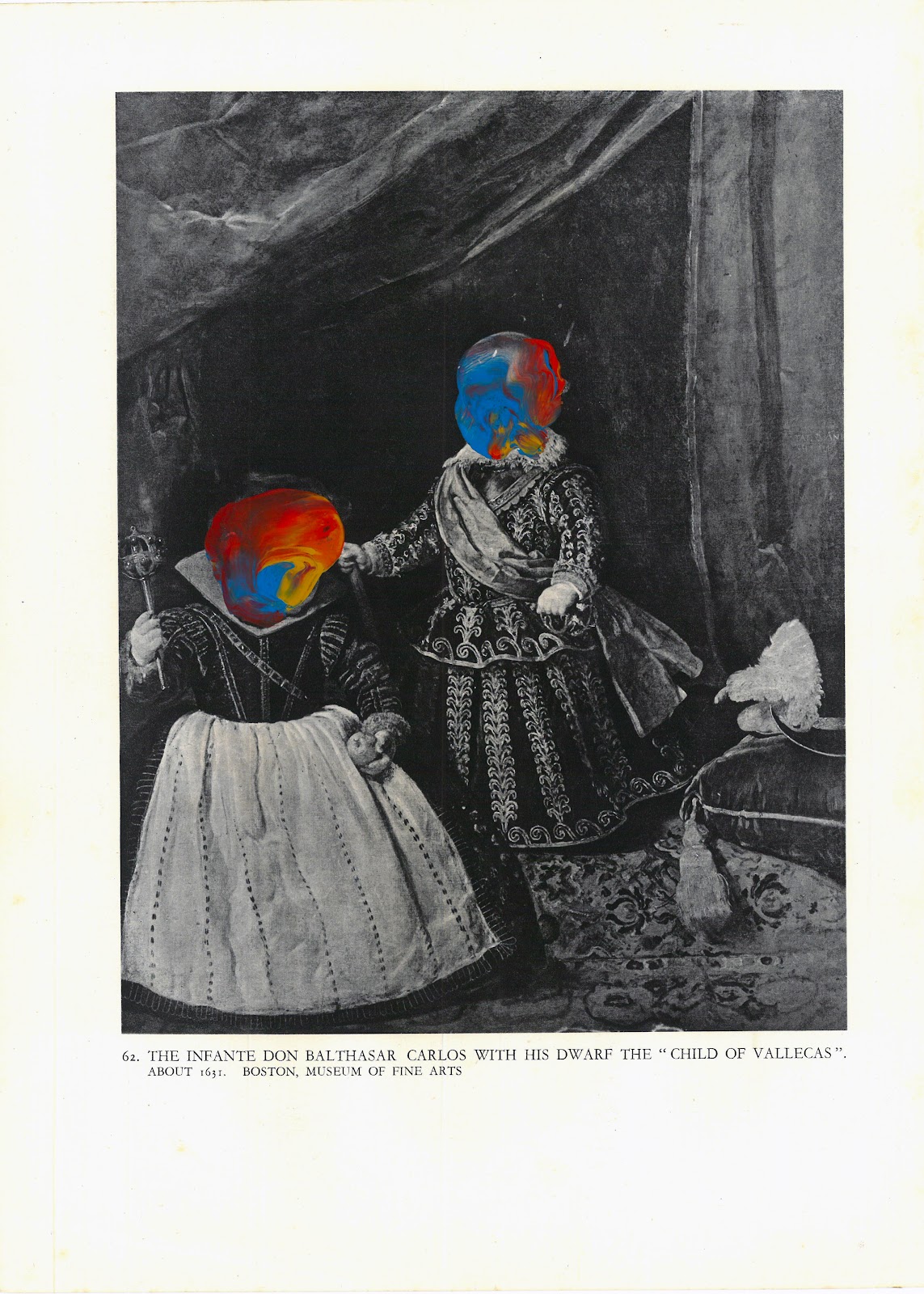CAPA (from, Collective Automatic Painting Amsterdam) is an International and Experimental group of artists founded in the 90's by the chilean expat painter in Amsterdam Freddy Flores Knistoff and the dutch painter Rik Lina. At the beginning, the interest of the group was the development of the automatism itself and the practice of a new kind of painting "the collective automatic painting" inspired by the CoBrA group. The CAPA-type practice is a kind of painting-on-painting intervention where more than one painter can work simultaneously on the same painting to create a type of collective environment that operates in a new kind of collaborative experience and painting.
 |
| Some of the CAPA members working at Amsterdam in 1996. Left to right Dave Bobroske, James Burns, Jan Gilliam and the same Freddy Flores Knistoff. |
Due to ideological differences of its founders, soon in 1997, after a big exhibition held at the Museum of Contemporary Art in Brazil, CAPA separated and re-formed into two different branchs, one led by Rik Lina and other led by Freddy Flores Knistoff (the one we develop here) which in words of Freddy Flores Knistoff, "did not mean a great change since personally; I never stopped working on this subject and sharing ideas with other artists and thinkers". While the branch of Rik Lina continued its links with the International Surrealism only. The Knistoff branch, in addition to participating with International Surrealism, also collaborated with other experimental movements of the artistic avant-gardes and above all, for the development of the automatism itself as an independent creative method.
F. F. Knistoff also was an active participant of the historical international movement of experimental artists called "Phases" and a good friend of Edouard Jaguer (who saw a great potential in his work), founder of this group and co-founder of CoBrA Movement. Many artists have worked alongside CAPA and throughout its history, contributing to the creation and development of this concept. Today, the Knistoff branch is more alive than ever through some historical members like James Burns (US) and José Estevao (Portugal) and, some other greatest artists and thinkers, like Jorge J Herrera Fuentealba (chilean-dutch), Marcos Vidal (Spain) and Patricio Álvarez Aragón (Spain).
The CAPA Knistoff branch has a long history that links it directly with the last european experimental movements that were developed after the II World War until today, as the mentioned Phases Group (founded by Edouard Jaguer in 1954), the Surrealist experimental current of the Lyrical Abstraction (The most automatic and experimental branch of the Surrealism), the International CoBrA Group (Karel Appel, Constant, Brands, Wolvecamp, Corneille, E. Jaguer, Alechisnky, Jorn, Dótremont...), Asger Jorn's ideas of the physical automatism and the modification method also investigated by Enrico Baj (founder of the Nuclear Movement). In addition, to the idea of collaboration in Art that the experimental circles promoted at "The International Ecounters of Albisola". All in all, you would be able to find more about Knistoff branch research in our digital archive and publications platorm (CAPA Editions, here).
The authenticity of CAPA lies in the fact that in each work created, more than two artists can participate/collaborate. This means that all participants can paint over the same canvas and simultaneosly, so we are allowed to paint over what someone else painted in favor of the final result (here it is very important to add that it is not a process of painting in the clean spots left by the other painter, but rather painting over it and killing a previous stroke, if necessary, and if the painting requires it. It is an infinite modification process). The creation process is silent, so we focus only on the painting and its final results (Process Art). Lately, CAPA has also been working a lot in the concepts of Modification Art, Appropriation Art, Détournement and Intervention Art as a complete experimental field. In addition to continuing with the collection of Artists Books (started in 2017) and the traditionals CAPA's "collective automatic paintings amsterdam" which we now also call "collaborative automatic paintings amsterdam".



